iPhone 5s vs. HTC One M8: Camera shootout!

iPhone 5s vs. HTC One M8 photography comparison: From low light to panoramas to HDR — which smartphone camera reigns supreme?
The iPhone 5s and the HTC One M8 arguably have two of the best smartphone cameras on the market. Sure the iPhone is 6 months old and the HTC One is brand new, but until Apple releases an iPhone 6, these are devices we have to choose from right now. The HTC One M8 tosses conventional megapixels aside in favor of UltraPixels, which is a fancy way of saying they suck in a lot of light. The iPhone 5s' iSight camera has smaller pixels, but twice as many. Even though both of them look great on paper, how they perform in the real world is what really matters. That's why we're putting the iPhone 5s and HTC One M8 head-to-head, camera-to-camera, in a full-on, in depth, photography shootout. So, which smartphone camera reigns supreme?
iPhone 5s vs HTC One M8: Camera specifications
The iPhone 5s has an 8 megapixel (2448x3264) iSight camera with a pixel size of 1.5 micrometers, and an f/2.2 aperture. The HTC One M8 has not one, but two rear cameras. HTC calls it a Duo camera. The main lens sports a 4 megapixel (1520 × 2688) UltraPixel sensor with an f/2.0 aperture and a pixel size of 2.0 micrometers. The secondary lens is there strictly to gather information about depth. Both the iPhone 5s and HTC One M8 feature backside illumination (BSI) which gets the wiring out of the way so the sensor can capture as much light as possible.
Like its predecessor, the HTC One M8 focuses less on sheer megapixel count and more on the size and quality of the pixels. Looking at specifications only, our gut tells us that means the HTC One M8, like the one before it, should take some seriously great low light photos but struggle a bit in brighter settings. It could also cause it to struggle a little while capturing motion shots. The iPhone 5s on the other hand has a higher megapixel count and a lower aperture. That should make it faster and more able to capture brighter shots without over exposing them.
iPhone 5s vs HTC One M8: Consistency
Unless otherwise specified, I used each camera in each test exactly the way they came out of the box. All settings were default. On the iPhone 5s that means I am running iOS 7.1 with Auto HDR enabled. On the HTC One M8 I am running KitKat 4.4.2 with HTC Sense 6.0. All settings are on Auto for every comparison.
I did choose a focus point when necessary. Otherwise, I let the hardware and software do all the heavy lifting.
iPhone 5s vs HTC One M8: Every day photography
From left to right: iPhone 5s, HTC One M8
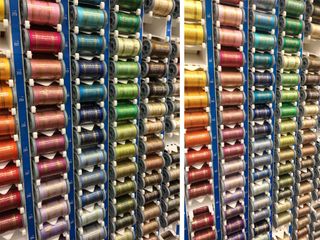
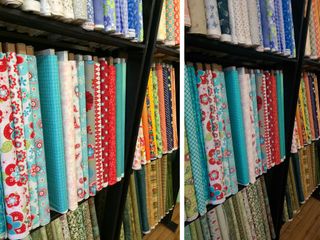


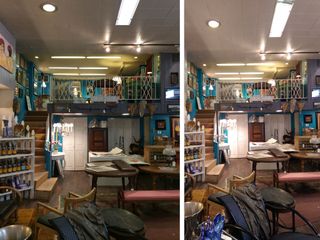


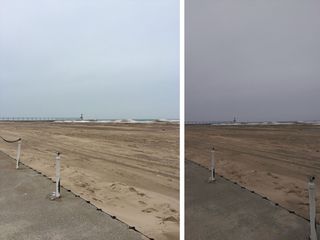
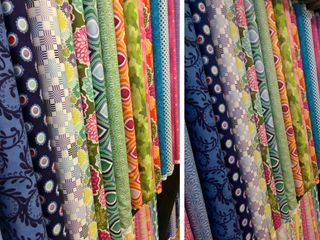
From top to bottom: iPhone 5s, HTC One M8
Master your iPhone in minutes
iMore offers spot-on advice and guidance from our team of experts, with decades of Apple device experience to lean on. Learn more with iMore!

The first thing I noticed is that the HTC One M8 occasionally has a hard time handling bright light. This is especially evident in the photos of the candle holder and the dogs on the bed. The lighting in both is blown out in the HTC One's samples. This is most likely due to the larger sensor and higher aperture on the M8. In other instances the HTC One M8 produced darker images in bright light, almost as if it overcompensated in order to not overexpose.
On the other hand, if you look at the photo of the incense jars, the M8 does a much better job of handling white balance than the iPhone 5s. The shelf looks yellow in the iPhone 5s sample while it's a better representation of real life in the HTC One's sample.
The iPhone 5s may not balance whites as well as the HTC One M8 but it's more consistent in producing images that are well lit and not over exposed. The HTC One struggles in bright settings and that's a much more noticeable problem.
Winner: iPhone 5s.
iPhone 5s vs HTC One M8: Capturing motion
From left to right: iPhone 5s, HTC One M8
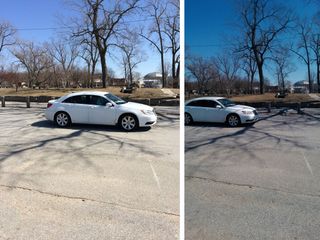

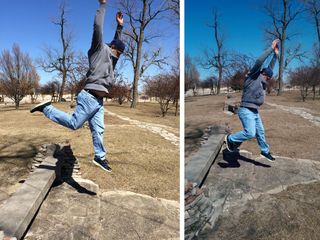
From top to bottom: iPhone 5s, HTC One M8

For motion capture I didn't use any extra features on either camera and used them as they'd come out of the box stock, since with motion you typically have one chance to capture something. In almost every scenario the iPhone 5s produced clearer and more vivid images. Both suffered in lower light scenarios where motion was concerned but the iPhone 5s still faired better. I did not use burst mode on either device for the sake of consistency. It is worth noting however that the HTC One M8's burst mode can capture 12 fps while the iPhone 5s' can capture 10 fps. The difference was negligible in my experience though and the HTC One M8 still produced darker images.
When it comes to capturing motion, the iPhone 5s does a better all around job with less room for error.
Winner: iPhone 5s
iPhone 5s vs HTC One M8: Low light photography

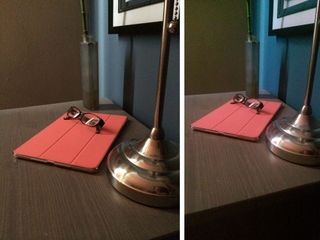




The HTC One M8 lets you edit ISO settings in the native camera app, so changing them is fair game. I attempted to get the best possible photo from each device given the settings I had to work with. What I found interesting was that I expected the HTC One M8 to do a lot better in low light than the iPhone 5s due to the aperture and pixel size. That wasn't always the case and no matter what I did, I still had noticeable amounts of grain in both samples. The iPhone 5s was more consistent in what it produced though. It produces consistently darker images for the most part but there was less noise. I never managed to find a happy medium with ISO on the HTC One M8, which was disappointing.
Both the iPhone 5s and HTC One M8 produce passable low light images but the results can be sketchy and still show significant amounts of noise.
Winner: HTC One M8, but only by a slight margin
iPhone 5s vs HTC One M8: Flash photography
From left to right: iPhone 5s, HTC One M8

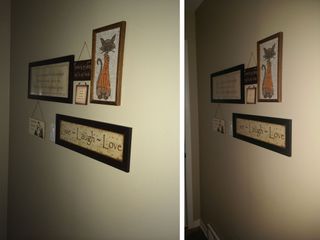

Flash photography is always hit and miss with a smartphone but in the 6 months I've been using my iPhone 5s, I've found it to be passable. The HTC One M8 is also passable and most of the time produces an image you'll be happy with — unless there's any kind of motion involved. In that instance, you'll get blur. The iPhone 5s struggles here too but not nearly as bad. The most interesting thing I discovered is that the iPhone 5s under low lighting conditions does a much better job balancing whites, which is the opposite of what I found during normal lighting conditions. Perhaps this is due to the iPhone 5s' flash and its ability to produce more natural skin tones and hues. Maybe it wasn't just marketing jargon Apple was spitting out?
The iPhone 5s produces an overall better image where flash photography is concerned.
Winner: iPhone 5s.
iPhone 5s vs HTC One M8: HDR photography
From left to right: iPhone 5s, HTC One M8


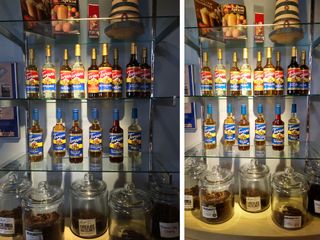
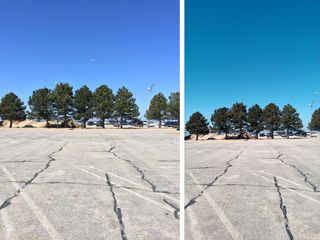
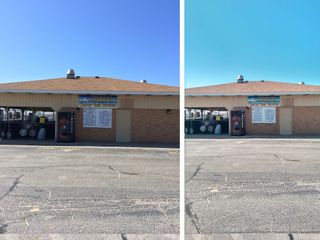

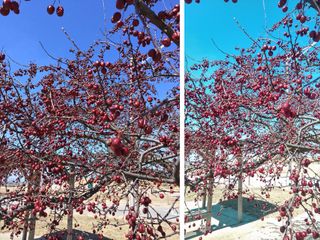
In the above samples I enabled HDR mode on both the iPhone 5s and the HTC One M8 so we were sure both devices were actively implementing it. The first thing I noticed is that the iPhone 5s does an incredibly better job balancing outdoor colors. Not only were they more vibrant and balanced, they were a more accurate representation of what was actually in front of me. Look at the photo of the berries and of the marina to see the huge difference in quality. The HTC One M8 doesn't do as good of a job balancing environments where there's a lot going on.
Winner: iPhone 5s
iPhone 5s vs HTC One M8: Macro and closeup photography
From left to right: iPhone 5s, HTC One M8
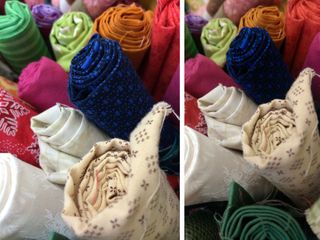
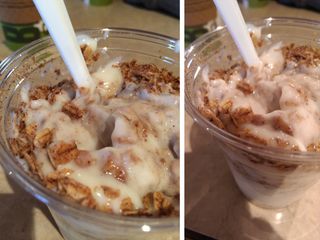






When it comes to macro photography, both the iPhone 5s and the HTC One M8 do incredibly well. I was able to get almost on top of subjects without having problems focusing. The iPhone 5s allowed me to get in a hair closer before focusing became difficult but the HTC One M8 was hot on its heels.
Both the iPhone 5s and HTC One M8 produce stellar closeups that anyone would be happy with.
Winner: Tie.
iPhone 5s vs HTC One M8: Digital zoom
From left to right: iPhone 5s, HTC One M8

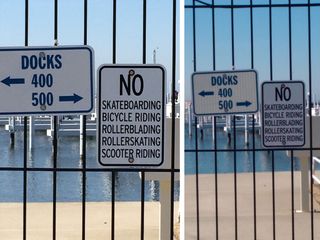
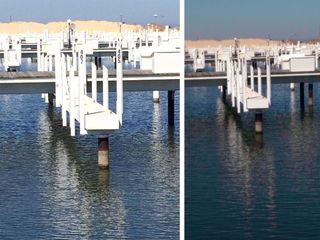

Both the iPhone 5s and HTC One M8 suffer when using digital zoom to its fullest extent. For each shot above I zoomed in as far as each camera would allow me. It becomes apparent very quickly that the iPhone 5s' higher resolution works in its favor as colors remain sharper without getting the hazy effect the HTC One M8 suffers from. I was also able to zoom in further with the iPhone 5s from the same point.
If you have to use the zoom feature frequently, the iPhone 5s' will fair far better than the HTC One M8's due to its 4 MP resolution.
Winner: iPhone 5s.
iPhone 5s vs HTC One M8: Panoramas
From top to bottom: iPhone 5s, HTC One M8
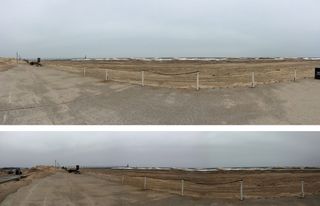
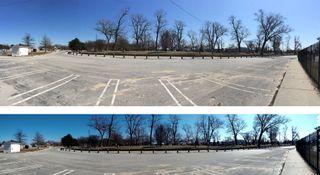
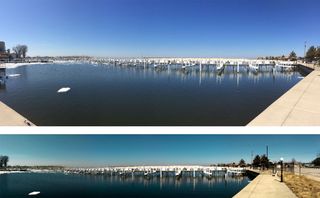
I was pleasantly surprised with how well the HTC One M8 handles panoramic photos. Not only is the Camera app easy to use and more forgiving, it produced consistently good panoramas. A lot of this you can attribute to software and how the feature itself works. I expected certain areas to be blown out where bright light was present but it wasn't nearly as bad as I expected. The iPhone 5s also produces consistently great panoramic shots and in most cases displays more accurate colors and tones — which we've seen throughout this entire comparison so far. So no surprise there.
They're both good but if you're picky about color, you're going to prefer the iPhone 5s.
Winner: Tie.
iPhone 5s vs HTC One M8: Depth of field
From left to right: iPhone 5s, HTC One M8

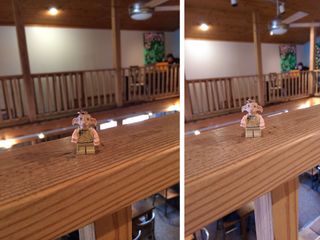

From top to bottom: iPhone 5s, HTC One M8

Bokeh is a term used when you want to achieve a shallow depth of field, also known as blurring the background for those not familiar with photography terminology. The secondary rear camera on the HTC One M8 is specifically made to capture depth information. A feature built in to the camera called Ufocus lets you tap to change the focus of a photo, as well as do a plethora of other cool things. Since it's built into the camera, it's fair game for this comparison. You can tell in the bottom photo of the coffee cup that the Ufocus feature not only works, but it works extremely well. The only photo above I did not use the Ufocus feature on is the photo of the Lego keychain on the railing. Those are stock photos in order to show the depth of field difference straight off the camera.
When it comes to bokeh and other special effects, the HTC One M8's depth sensor blows the iPhone 5s out of the water. It may be a novelty, but it's a damn cool one.
If you want to learn more about the HTC One M8's Ufocus feature as well as the other special effects the depth sensor is capable of achieving, check out Android Central's coverage of the M8's camera.
Winner: HTC One M8
iPhone 5s vs HTC One M8: The bottom line

The HTC One M8 offers a lot of extras but it's at the sake of consistency — which is something Apple has managed to pretty much nail with the iPhone 5s. Sure the Duo camera is a neat feature, but it doesn't save the M8 from falling short during every day scenarios. Having only 4 megapixels, even if they are UltraPixels, has a seriously negative impact on resolution. Not only are the iPhone 5s' images consistently crisper and clearer, the zoom feature is actually useable. I may have been able to overlook some of that if the low light photos on the HTC One M8 were what I expected. Sadly, they weren't. In most instances both devices produced images that were so similar, the different was negligible. In comparison, the iPhone 5 really struggled in low light last year — if you can remember from our 2013 HTC One vs iPhone 5 comparison. I didn't find that to be the case with the iPhone 5s. The improvements are obvious.
HTC and Apple made very different choices this year when it comes to camera hardware. In my opinion, Apple wins this round. The iPhone 5s does a great job of balancing colors, tones, and exposure 99.9% of the time. And for people who just want to pull out their phone, snap a photo, and not have to fiddle with settings, they'll appreciate that. The HTC One M8's Duo camera does some neat tricks but I would have rather seen HTC focus on overall image quality before adding bells and whistles.
iPhone 5s vs HTC One M8: Your thoughts?
We can objectively measure specs. We can read more megapixels or bigger pixels, higher aperture or number of lens elements. We can also make subjective calls. We can say which colors or levels just look better to our eyes. But a good camera is more than the sum of its parts, and the definition of a good camera can and will vary from person to person depending on their priorities and tastes. So, if you've tried both the iPhone 5s and the HTC One M8 let me know which one you liked better and why. If you haven't, check out the photos above and give me your assessment. iPhone 5s or HTC One M8 — which camera is better for you?
See also:
iMore senior editor from 2011 to 2015.
Most Popular







